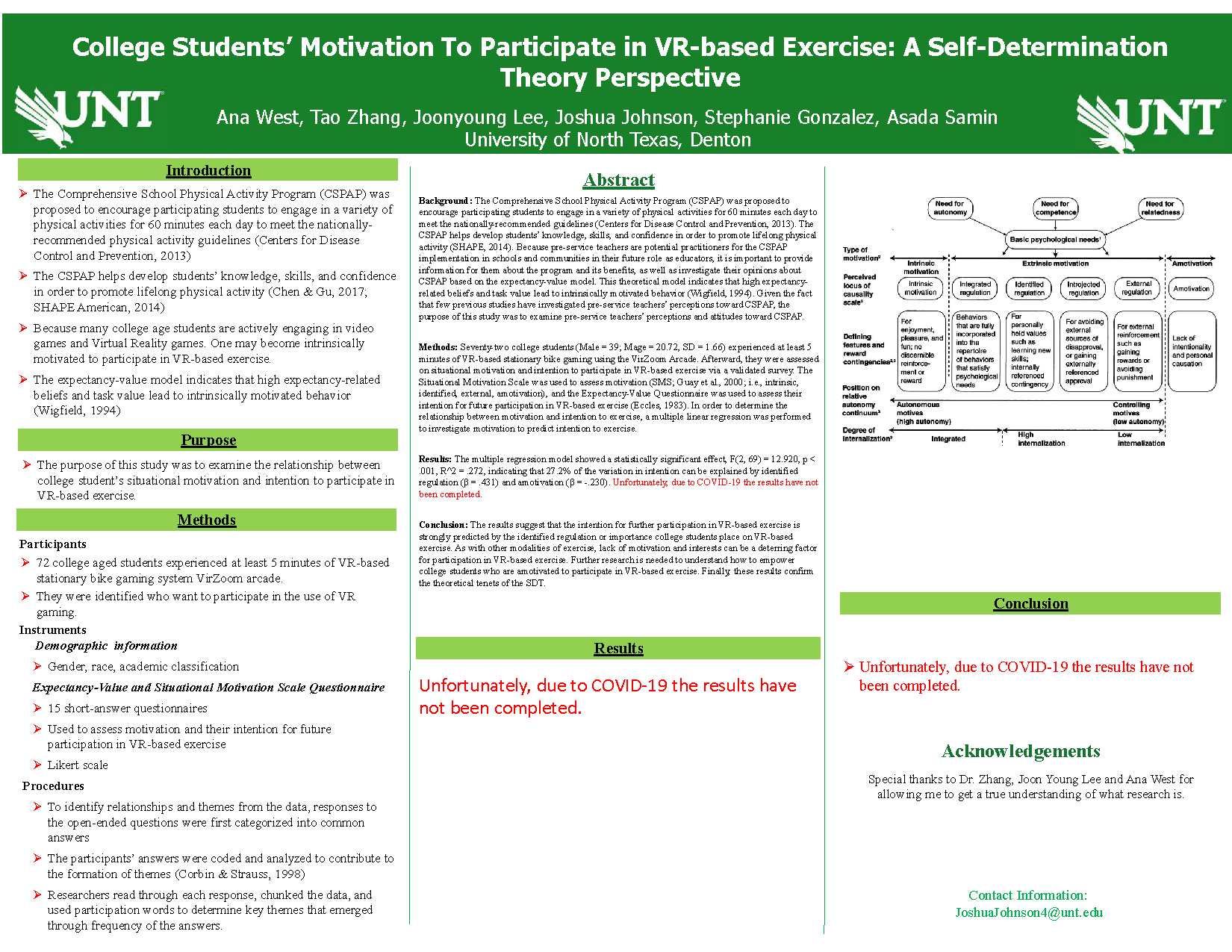First Name:
JoshuaLast Name:
JohnsonMentor:
Dr. Tao ZhangAbstract:
Virtual reality (VR) has become a popular modality for exercise, physical therapy, and rehabilitation (Mestre, Ewald, & Maiana, 2011; Parsons et al., 2017). VR-based exercise is becoming more available and could be a viable form of exercise (Zeng et al., 2018). In addition, the self-determination theory (SDT; Deci & Ryan, 1985; Ryan & Deci; 2000) has been used to examine college student’s motivation to exercise (Chu, Zhang, & Cheung, 2019; Chu, Zhang, & Hung, 2018). However, more empirical research evidence is needed to examine college students’ motivation to participate in VR-based exercise from the SDT perspective. PURPOSE: The purpose of this study was to examine the relationship between college student’s situational motivation and intention to participate in VR-based exercise. METHODS: Seventy-two college students (Male = 39; Mage = 20.72, SD = 1.66) experienced at least 5 minutes of VR-based stationary bike gaming using the VirZoom Arcade. Afterward, they were assessed on situational motivation and intention to participate in VR-based exercise via a validated survey. The Situational Motivation Scale was used to assess motivation (SMS; Guay et al., 2000; i.e., intrinsic, identified, external, amotivation), and the Expectancy-Value Questionnaire was used to assess their intention for future participation in VR-based exercise (Eccles, 1983). In order to determine the relationship between motivation and intention to exercise, a multiple linear regression was performed to investigate motivation to predict intention to exercise. Results: The multiple regression model showed a statistically significant effect, F(2, 69) = 12.920, p < .001, R^2 = .272, indicating that 27.2% of the variation in intention can be explained by identified regulation (β = .431) and amotivation (β = -.230). Conclusion: The results suggest that the intention for further participation in VR-based exercise is strongly predicted by the identified regulation or importance college students place on VR-based exercise. As with other modalities of exercise, lack of motivation and interests can be a deterring factor for participation in VR-based exercise. Further research is needed to understand how to empower college students who are amotivated to participate in VR-based exercise. Finally, these results confirm the theoretical tenets of the SDT.
Poster:





